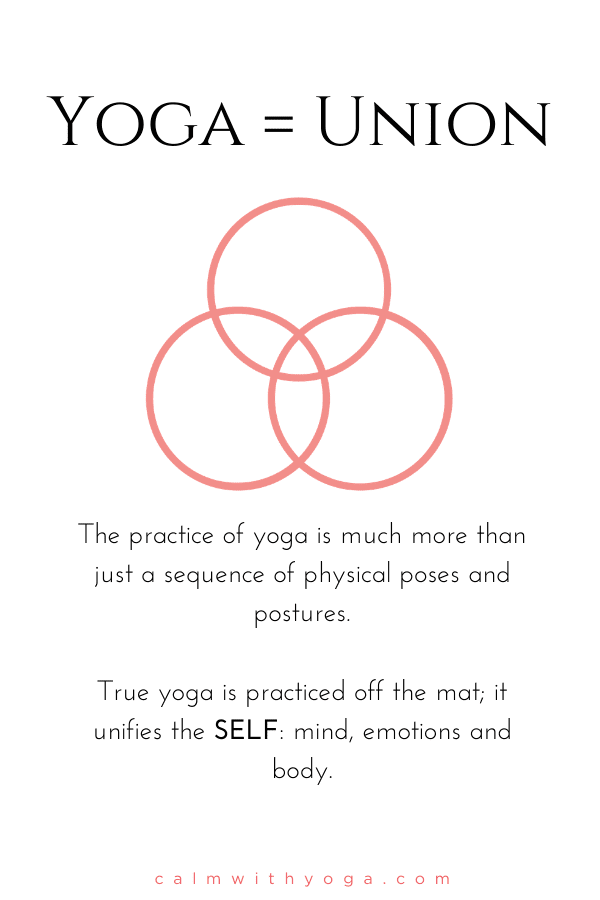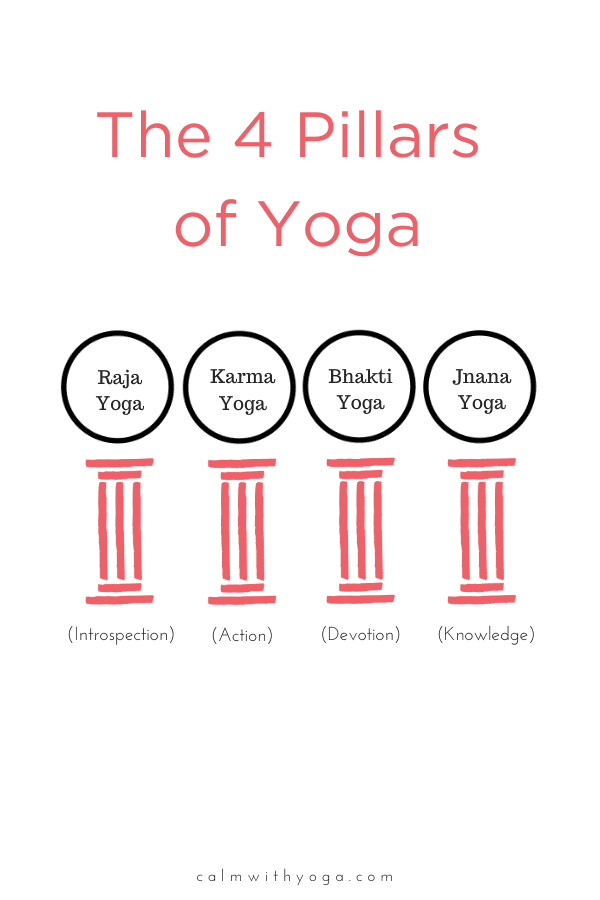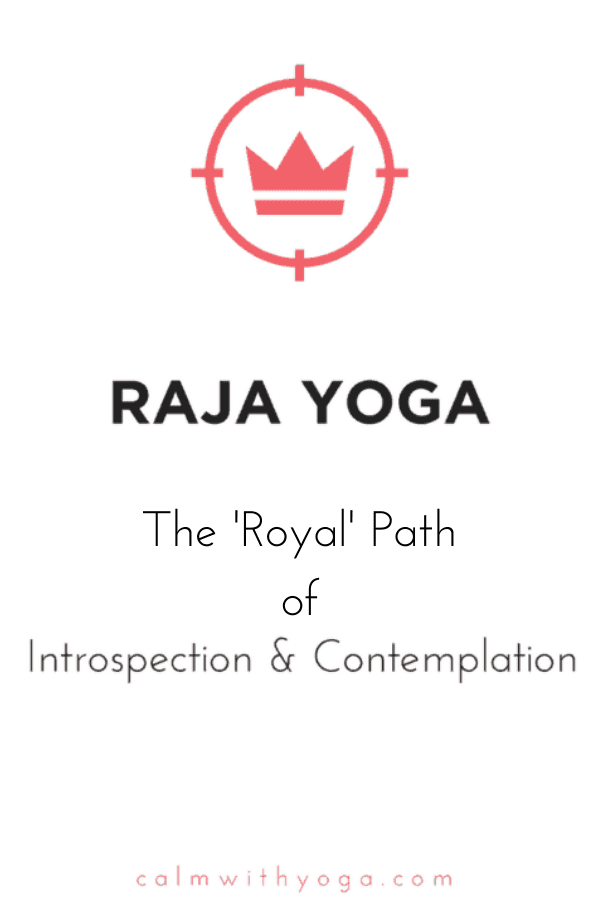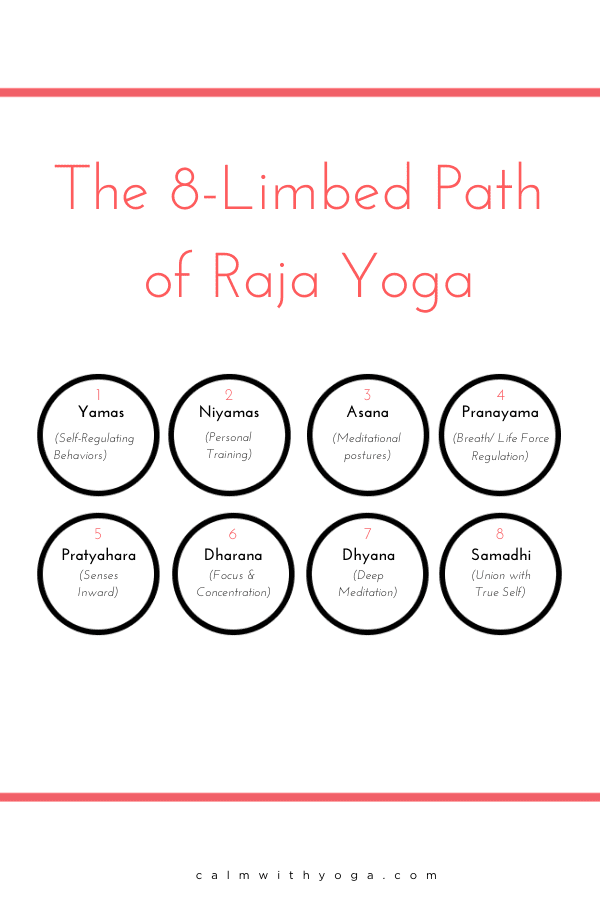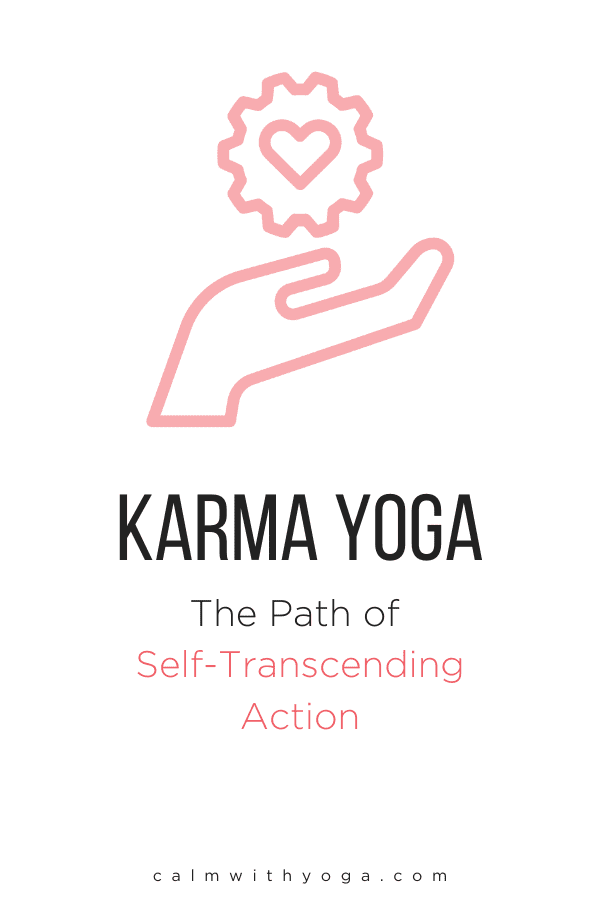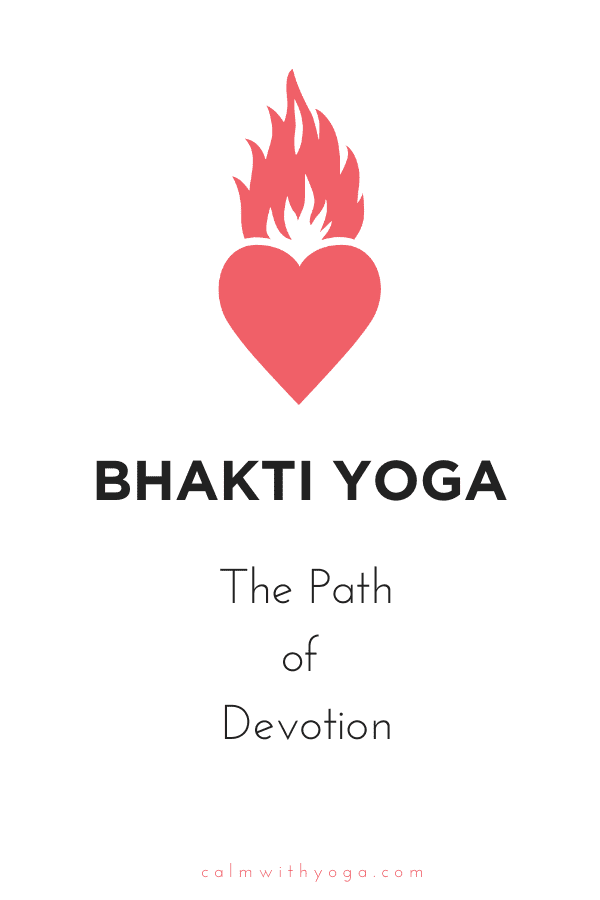– BKS Iyengar, Yoga teacher & author of ‘Light on Yoga’ You can’t control many things in your outer environment, but you can most certainly control what goes on in your inner environment. Every day, you get to decide how you direct and employ your thoughts, emotions, actions, perceptions, and choices. Your choices can either make you stronger and more resilient in the face of challenges, last-minute changes, and unexpected curveballs in life… Or…they can increase your stress levels. For thousands of years, the ancient Yogic Path has offered time-tested strategies and solutions for approaching life. This Yogic Path still has so much to offer us today, even if you’re just starting your own yoga practice or just attend yoga classes at your local studio. That’s the beauty of Yoga, it has so much to offer you no matter where you are on your journey. Yoga postures (asanas) are usually the gateway or entry point for most of us. Then we discover a whole other world of aspects of Yoga we knew nothing about. By observing, applying, and living the information contained in the 4 Pillars of Yoga (aka the 4 paths of yoga), we’ll not only deepen and enrich our practice (sadhana) but we’ll also be better equipped and prepared to efficiently deal with whatever comes our way…
What Yoga Really Is
The word ‘yoga’ in Sanskrit (known as the philosophical language of Hinduism and Buddhism) comes from the root ‘yuj’ which literally means ‘to yoke’ (to attach). Yoga means union.
To practicetrue yoga means to move towards the unification of your mind, emotions, body, and energy.
A true yogi isn’t one that can stand on their head or turn their body into a pretzel, but rather, one who goes inward in order to transform themselves from the inside out by mastering their internal environment. It is by mastering the internal environment that we can successfully and efficiently maneuver through the rugged terrain of the outer environment. Mastering ourselves means unifying all of our layers – the mental, emotional, physical, and energetic ones. When we perceive ourselves to be managing life efficiently, we inevitably feel more calm and more on purpose. Feeling more on purpose leads to more meaning in life. Happiness comes and goes like ocean waves; what is carried throughout these ups and downs is how meaningful we perceive our lives to be, and how fulfilled we feel by our experiences.
Obstacles to a Calm & Meaningful Life
In Yogic Philosophy, there are 5 main obstacles that can get in the way of our living a calm and meaningful life. – Pada II, Sutra 3, The Yoga Sutras of Patanjali They are called kleshas. These 5 obstacles keep us from experiencing the Union of the Self. They, therefore,keep us from self-transcending.
The 5 obstacles are:
These 5 obstacles build upon each other. In his book: “The Yoga Sutras of Patanjali: Commentary on the Raja Yoga Sutras,” Swami Satchidananda explains: “Ignorance, egoism, attachment, hatred and clinging to bodily life are the five obstacles… The order is also significant: because of ignorance of the Self, egoism comes. Because of egoism, there is an attachment to things for the ego’s selfish pleasure. Because sometimes the things we are attached to do not come or are taken away, hatred for those who get in our way comes in. And, finally, because we are attached to things and afraid of death, there is clinging to life in the body.” These 5 obstacles are a common occurrence of the human experience and we all encounter them the same. Instead of pressuring yourself to think you have to aim for the eradication of these obstacles, think of them as a tool to help you practice and live the 4 Pillars of Yoga. Aiming for the complete removal of these things is not realistic for most of us, so don’t even bother driving yourself mad trying. Instead, start noticing and catching yourself the moment you come up against one of these kleshas. Observe yourself interacting with the obstacle from a neutral and non-judging place. Each time you become conscious of being in the throes of an obstacle, know that it is feedback begging you to look at something within yourself you haven’t yet brought to light. The more you do this the more aware you’ll become and the less suffering and friction you’ll experience.
The 4 Pillars of Yoga
The most popular notions of yoga involve going to the studio, getting your mat out and moving your body according to specific physical postures and flows. But in reality, this is just a very small portion of the true, whole yoga picture. The 4 Pillars offer us alternative ways to practice yoga in our daily lives without the need for a mat or a studio. The 4 Pillars consist of: THE YOGA OF THE MIND – Raja Yoga THE YOGA OF ACTION AND EFFECT – Karma Yoga THE YOGA OF DEVOTION AND LOVE – Bhakti Yoga THE YOGA OF KNOWLEDGE AND WISDOM – Jnana Yoga Let’s discuss each one.
1. Raja Yoga
The physical yoga, or Hatha yoga, was primarily designed to facilitate the real practice of Yoga— namely, the understanding and complete mastery over the mind. So the actual meaning of Yoga is the science of the mind. Traditionally, the word Yoga by itself refers to Raja Yoga, the mental science… Its ultimate aim is to bring about a thorough metamorphosis of the individual who practices it sincerely. –Vidya Vonne, Yoga Teacher & Writer Raja Yoga is called ‘Royal Yoga’ because it is considered the highest form of yogic practice. ‘Raja’ means king. As a king reigns over his kingdom, Raja Yoga teaches us how we too can reign over our inner kingdom – our mind, emotions, body, and energy. Raja Yoga is often referred to as‘mental yoga’because introspection, contemplation, and self-observation are a focal point of this pillar. Raja Yoga is a holistic system for stress and anxiety management. It doesn’t just focus on the mind alone, but rather, looks at each life area of the individual, to gain a broad perspective of the overall picture. The primary text of Raja Yoga is known as The Yoga Sutras of Patanjali. This ancient text outlines 196 Sutras, or ‘sutures’ of timeless wisdom intended to aid in following the 8-Limbed Path towards the final limb, Samadhi, or the Union of Self. The below image outlines each of the 8 limbs and their English translation:
We can begin to incorporate the practice of Raja Yoga in our lives by: – Turning our senses inwardly through introspection, self-observation, and self-inquiry – Practicing presence, mindfulness, and one-pointed focus or concentration – Engaging in meditation, breathwork, and contemplative practices – Getting reconnected with our bodies and the internal workings of our temples
2. Karma Yoga
Karma is often given a bad rep. Each action creates a certain memory. That is karma. – Sadhguru, Yogic teacher & mystic It’s mistaken for “good karma” vs. “bad karma.” But karma is actually neutral, not good or bad. It’s neutral because it’sa natural law much like the law of gravity. You might recognize it as the law of cause and effect. The word karma literally translates to “action” or “work.” As natural law, karma means that what we do now through our intentions, reactions, and responses [CAUSE] creates ripples that influence our future [EFFECT]. Yoga teacher and author Kamini Desai, Ph.D. explains karma simply and succinctly like this: – Sakyong Mipham, Tibetan Buddhist Lama (Teacher of the Dharma) “Karma is very simple. Who you are is the result of who you have been. And who you will become is the result of who you are now… There are two aspects of karma, or cause and effect. There’s an internal aspect, and there’s an external aspect. Both of these together lead to the effect or outcome… The internal aspect – what you do with whatever is coming to you – has a very profound effect on the final outcome. Most of us don’t even pay attention to this. So, why this is so powerful is because it implies that if I change how I internally am, with any circumstance, I could change the effect. I could change my karma.” (1) We can begin to incorporate the practice of Karma Yoga in our lives by: – Taking inspired action – Releasing expectations or attachments to outcomes – Bringing mindfulness to the ways we react and respond to the events in our lives – Taking time to get clear about the things we most value in life and incorporate more and more of those things into our days – Following our true and authentic purpose and mission, and having the courage to live it and go after it – Serving others in ways that inspire and fulfill us
3. Bhakti Yoga
According to the Merriam-Webster dictionary, devotion is: – Sadhguru, Yogic teacher & mystic “the act of dedicating something to a cause, enterprise, or activity.” As the path of devotion, Bhakti yoga inspires us to give of ourselves to a cause greater than our present circumstance. In this way, we practice devotion daily towards this cause and each day we move more towards it. Devotion to a cause doesn’t have to be a grand thing, although it could be. You can also devote yourself to: – your relationship/marriage/family – your health and healing – empowering your mind – your craft or life’s work In this way, our daily actions become sacred and meaningful. This is how we create a life of meaning… By finding a cause that speaks straight to our hearts and sets them on fire. We practice devotion out of love. Besides the path of devotion, Bhakti yoga is also the path of love, but not love as we generally know it. For to truly love something or someone means to accept it as it is, in this moment. It means to see both sides of it and therefore, experience true gratitude for it being as it is.
We cannot love another or anything else until we’ve learned to love, accept, and appreciate ourselves.
So Bhakti Yoga begins with us. – Dr. John Demartini, Educator & Author We can begin to incorporate the practice of Bhakti Yoga in our lives by: – cultivating acceptance, appreciation, and tolerance for ourselves – cultivating acceptance, appreciation, and tolerance for those closest to us – cultivating acceptance, appreciation, and tolerance for others, even strangers – for being gentle with ourselves when we get the first three points wrong, or when we mess up – making time to find a cause that lights our hearts on fire – Being devoted to that cause daily – Being devoted to ourselves – our health, our wellbeing, and our stability
4. Jnana Yoga
Jñanameans: “knowing” and “becoming acquainted with.” – Rolf Sovik, Psychologist & Hatha yoga teacher This path of knowledge and wisdom is the most difficult path of the four, for it requires serious study and is very intellectually heavy. The traditional practice of Jnana yoga involves the study of scriptures and yogic texts and is the path to enlightenment through reason. Through this practice, one gains knowledge of one’s true nature and also gains wisdom and discernment. Wisdom to differentiate the truth from illusion. We can begin to incorporate the practice of Jnana Yoga in our lives by: – self-study and self-inquiry – seeking knowledge in the form of books, lectures, videos, online articles, teachers – becoming aware of our unanswered questions – what are we seeking? – take time to be in nature – meditate and dive into other contemplative exercises – become comfortable in silence, don’t run away from it – become aware of distractions, addictions, and attachments – be comfortable being alone Can you see how being mindful of these four pillars and slowly putting these principles in practice can lead to more stability and calm in your life? What are some other ways your relationships, work, stress levels, health, and purpose might be influenced by observing the four pillars? THE YOGA OF THE MIND – Raja Yoga THE YOGA OF ACTION AND EFFECT – Karma Yoga THE YOGA OF DEVOTION AND LOVE – Bhakti Yoga THE YOGA OF KNOWLEDGE AND WISDOM – Jnana Yoga
REFERENCES : (1)https://www.youtube.com/watch?v=lT33lSVDl10
